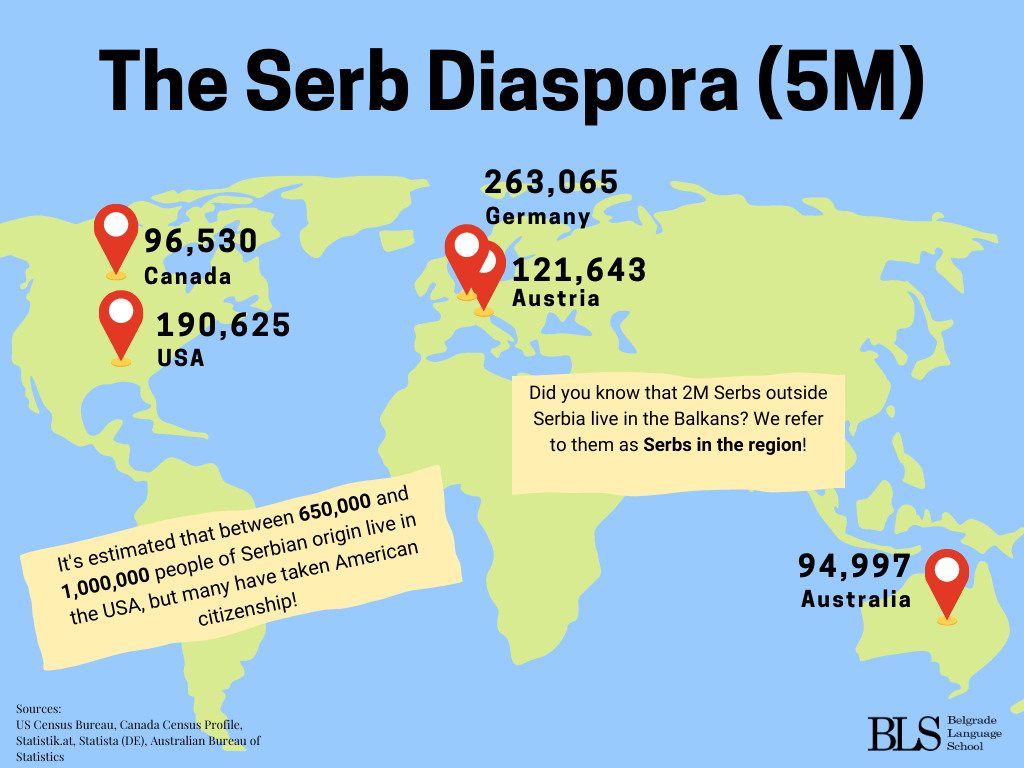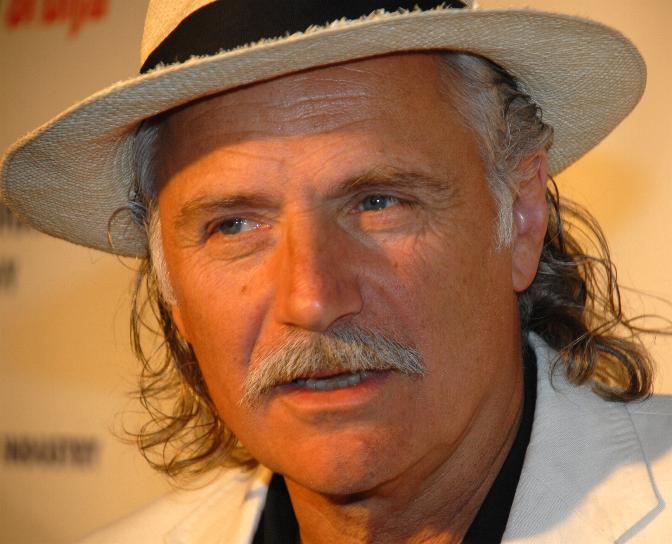Written by: Olivera Tolimir
If you’re reading this, there’s approximately an 87,63% chance you are a part of the Serbian diaspora.
Just kidding.
There’s no way to know that information, but many of our readers and students have Serbian roots. So, if that’s the case, you may already be familiar with the concept of the diaspora and its importance.
But just in case, let’s start from the beginning.

What is Diaspora?
A diaspora is a community of people who migrated from their homeland to a foreign country. The causes can be various, but economic and political reasons dominate. People mostly flee their motherland because of war, political instability, or lack of livelihood.
Serbians, unfortunately, had it all in the past decades. So, it’s no wonder many people decided to search for happiness in galax… ahem, lands far, far away.
What is the Serbian Diaspora?
First, let’s clear up some possible misunderstandings. There’s a slight difference between the terms Serb diaspora and Serbian diaspora.
All people who emigrated from Serbia make up the Serbian diaspora. The Serb diaspora, on the other hand, is made up of all Serbs living abroad. Since in the Serbian language, we don’t have two terms (we only use the construction srpska dijaspora), we’ll use both words interchangeably in this text.
Whenever we mention the Serbian / Serb diaspora in this text, we talk about Serbs living outside Serbia. We don’t have two terms because no matter where a person comes from, their ethnicity stays the same. So, if a Serb from Bosnia and Herzegovina moved to the USA, he’s still part of the srpska dijaspora. It doesn’t matter he isn’t from Serbia.
Speaking of which, there’s one more confusing thing about the Serbian diaspora. When we mention the diaspora, we exclude Serbs living in other ex-Yugoslavian countries (Montenegro, Bosnia and Herzegovina, Croatia, Macedonia, Slovenia). It’s not that we forget to count them in, of course. We use the term Serbs in the region for this part of the Serbian community.
Now that we explained everything, let’s dive into the question from the title!
How Large is the Serbian Diaspora?
Let’s answer now and explain later! It’s estimated that the Serb diaspora is consisted of around three million people.
If you’re from the USA and remember we used the word “huge” in the title, you may laugh a bit now. And we understand.
But keep in mind that Serbia has around six million residents! When we count two million people living throughout the (mentioned) region, we almost get a 50:50 situation! Less than six million Serbs live in Serbia, while around five million live outside of it.
So, taking into account the total number of Serbs, the Serbian diaspora is huge.

Where do All Those People Live?
The largest Serbian diaspora is in the USA. According to the 2019 American Community Survey, around 176,000 Serbs live in the USA. But this can’t be taken as the exact number, since many Serbs don’t declare as such during the surveys.
Many Serbs moved to the USA more than a hundred years ago. Most of them didn’t emigrate from the territory of today’s Serbia, but Croatia. So the officials often classified them according to the region, not ethnicity.
In the second wave of migration, people often declared themselves Yugoslavs. In the third wave (approximately thirty years ago), they sometimes didn’t want to say they were Serbs for the fear of discrimination because of politics and Yugoslav war.
On top of all these reasons, there are mixed marriages, second and third generations of immigrants who lost touch with their heritage and started feeling more like Americans, etc. The Serbian language-persevering is the key for kids born abroad to remember their roots.
While all of these reasons are legitimate, we must take them into account when estimating how large the Serbian diaspora is in a specific country. As for the USA, the more accurate estimation states that a few hundred people live in Chicago only, while 650,000 or more people live in the whole country.
Chicago is the city with the densest Serbian population outside of Serbia. After it, there is Toronto, Canada, while the European city holding this title in Vienna, Austria. Besides the USA, Canada, and Austria, a significant amount of people immigrated to Germany, Australia, the UK, and many other countries.

The Serbian Heritage Abroad
The Serbian people abroad usually gather around church or cultural and historical activities.
The biggest Serbian church outside Serbia is the Saint Sava Serbian Orthodox Cathedral in Manhattan, New York City. The church was built between 1850-1855. It’s the religious and cultural center of Serbs living in the USA. The Saint Sava Church burnt down on Easter 2016. It was restored, and at the beginning of this year, the first liturgy has been performed since. In the church, there are also exhibits on Serbian culture and history.
The biggest Serbian Orthodox churches in Canada and the UK hold the same name as the one in the USA. Also, it’s worth mentioning the Serbian Museum and Archives of Canada in Ontario, and the Serbian Cultural Center in Paris.
The churches and museums have a similar task – they should gather the Serbian diaspora together, help them remember their roots, and provide a better understanding of the Serbian culture to their compatriots.
Notable Serbs Living Abroad

There are many prominent Serbs who are a part of the diaspora. Some went to achieve their goals, some were searching for job opportunities, and some were trying to get the best possible education.
The most famous Serb living abroad today is probably Novak Djokovic, the best tennis player in the world. Aside from him, there’s the basketball player Nikola Jokic, who became the 13th consecutive MVP in the NBA.
Yes, Serbia is famous for its athletes, but historically, the most notable Serbs who were a part of the diaspora are the inventor, physicist, and electrical engineer Nikola Tesla (developed alternative current), mathematician and astrophysicist Milutin Milankovic (explained long-term changes in the Earth’s climate), and Mihajlo Pupin (a founding member of National Advisory Committee for Aeronautics (NACA), which we today know as NASA, and a participator in the founding of American Mathematical Society and American Physical Society).



